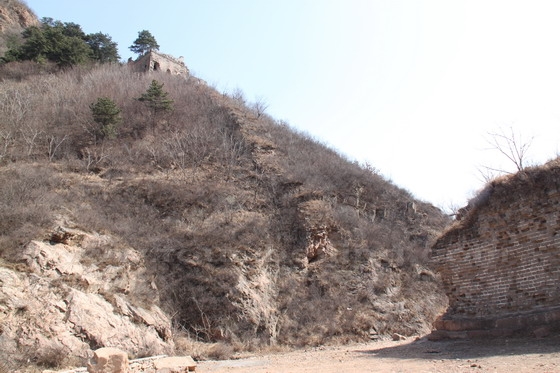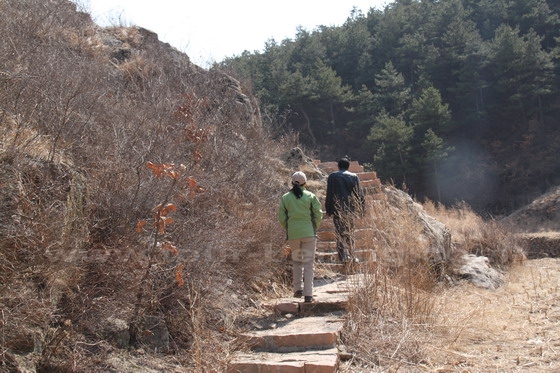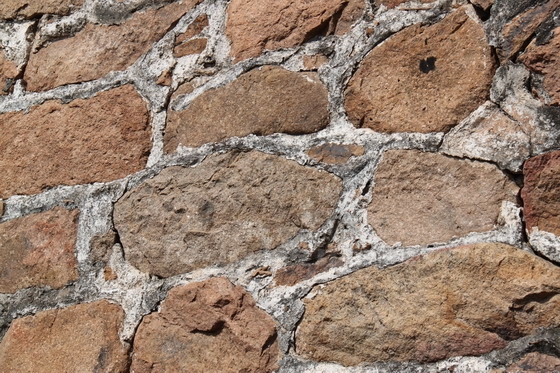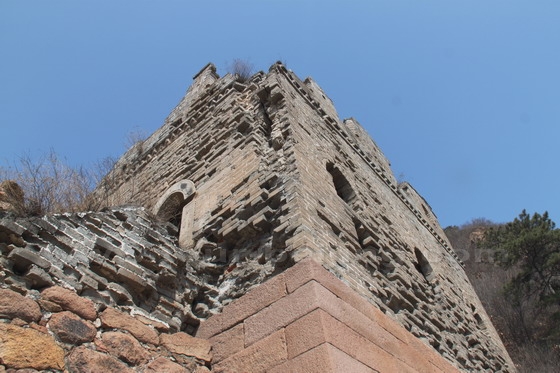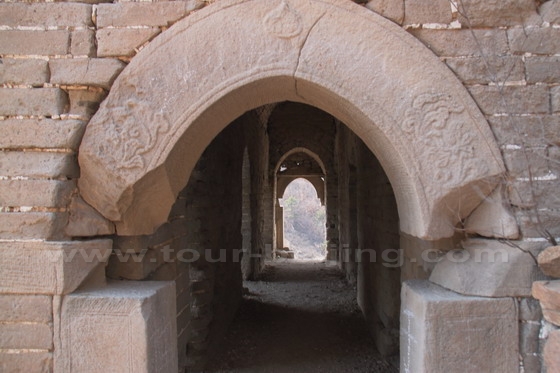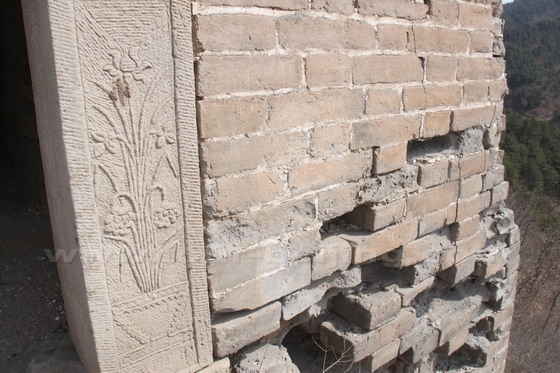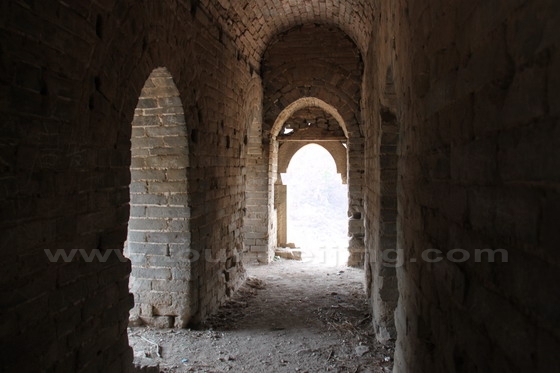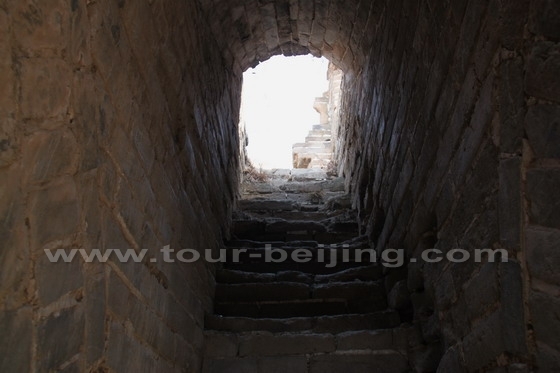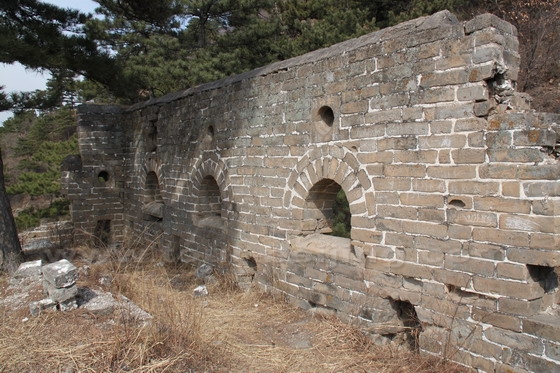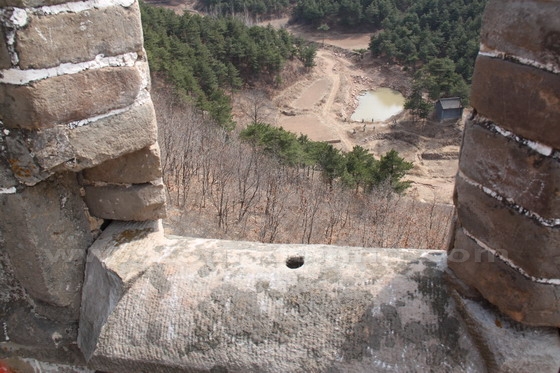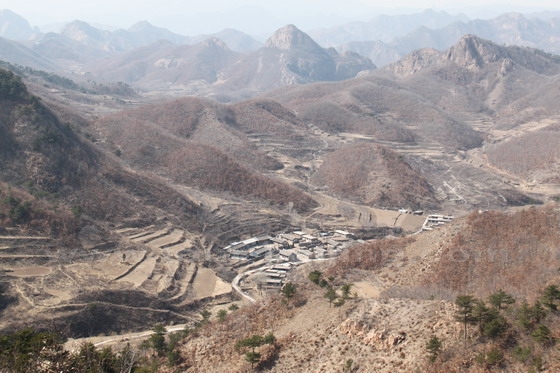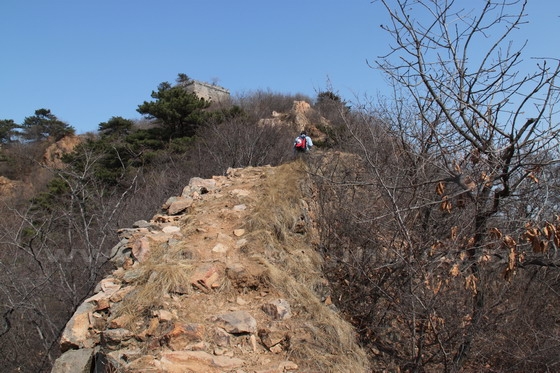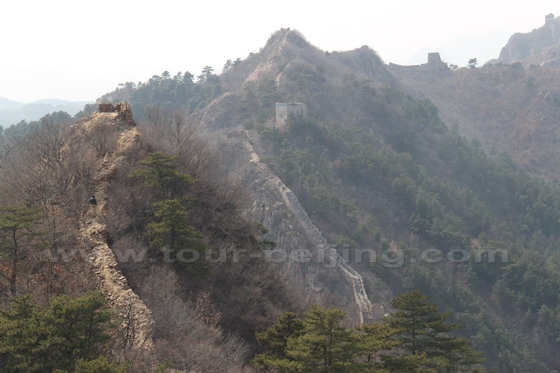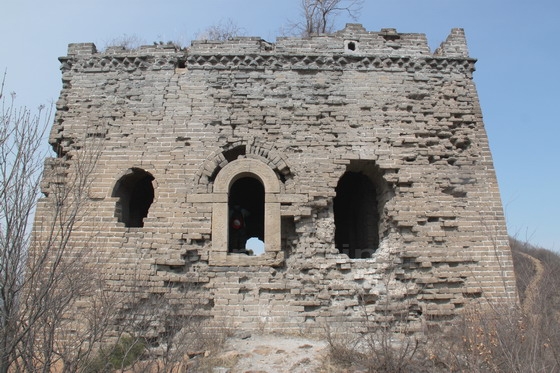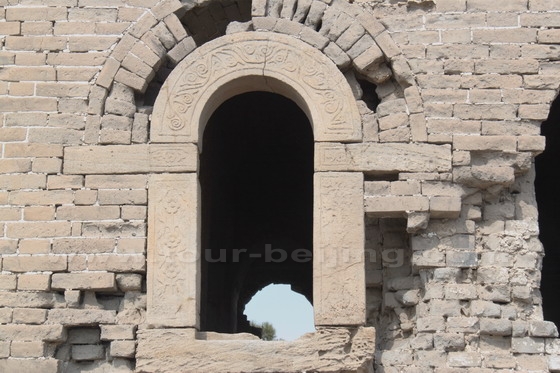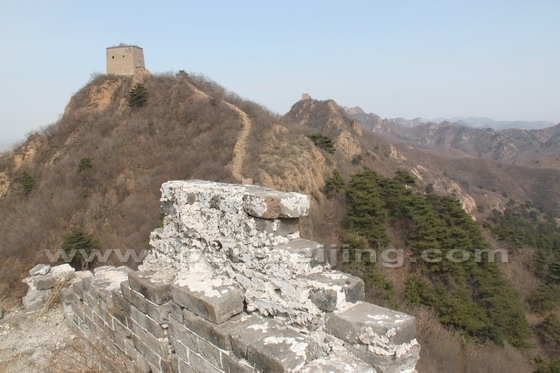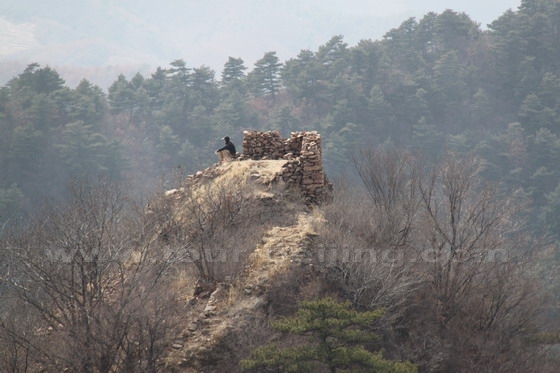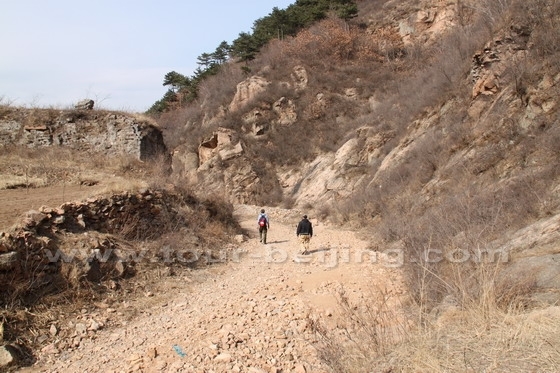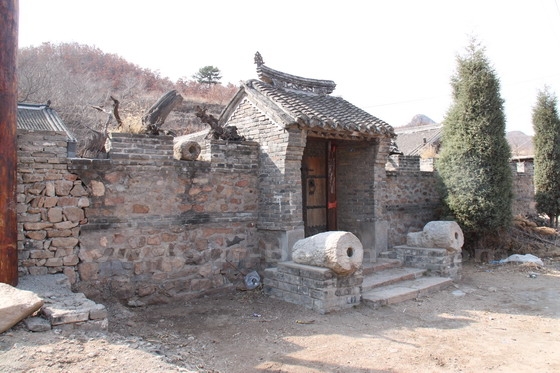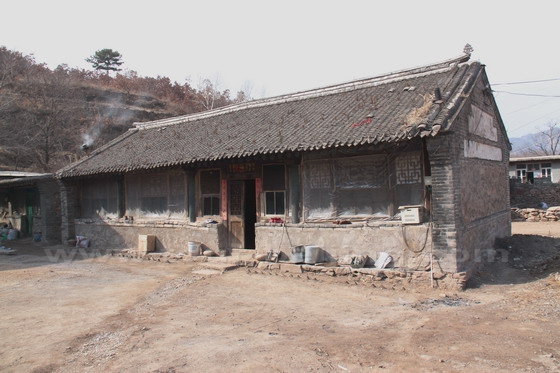Are you interested in a Great Wall Tour? The Great Wall section extended west from Zhuizishan Great Wall is known as Xiaohekou Great Wall. Xiaohekou Great Wall is named after a natural village called “Xiaohekou” which literally means “a small river’s mouth”.
Xiaohekou Village is located within the administrative village known as Xigou Village in Yongan Town of Suizhong County in Liaoning Province. Keeping on walking to the west from Xiaohekou Great Wall, you will get to Badaling Great Wall in Beijing while to the south, you will get to Shanhaiguan.
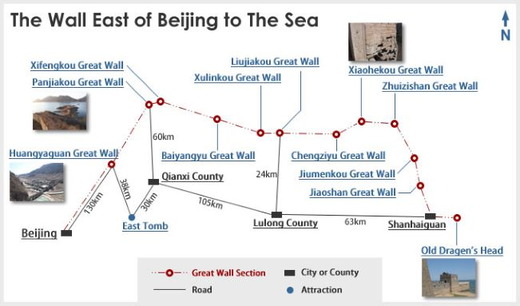
Escorted by our farmer turned guide – Lao Yang, we drive from Zhuizishan Great Wall westwards along a cement mountain road for about 9km, passing by Xiaohekou village and get to a simple parking lot in front of “the mouth of a dry river”, which is actually a narrow valley with a dry river spanned by a Great Wall pass – Xiaohekou Pass. Now the Great Wall pass has been broken and damaged.
Now the Great Wall pass has been broken and damaged.
Xiaohekou Great Wall was originally built from the year 1381 in Ming Dynasty with a total length of 8.9km. This section of the Great Wall has 36 watch towers, of which there are 12 towers have stone carvings in decorated design and style on the windows and doors.
Xiaohekou Great Wall was first discovered in July, 2004. Ever since there are more and more people coming to Xiaohekou including photographers, archaeologists, artists and normal travelers.
We walk through the broken Xiaohekou Pass (a small river’s mouth), turn left and climb up on a well built mountains slab paved road.
Let us have a close look at the decorative relief.
Then we drive to the nearby village – Xiaohekou Village. Most of the villagers are the descendants of the army guiding the Great Wall, who were from Yiwu, a town in southern China, which was the hometown of Qi Jiguan (November 12, 1528 – January 5, 1588).
Qijiguan is was the Wall’s architect in chief responsible for the building of the great wall from Beijing to Shanhaiguan. Qi’s army of guardians, joined by their families made the Wall alive with villages, fields, orchards and many of which survive to this day. Xiaohekou Village is one of them. which still keeps some traces in Ming and Qing dynasties.
Further Readings
How to visit Huangyaguan Great Wall.
How to visit Panjiakou Great Wall.
How to visit Xifengkou Great Wall.
How to visit Baiyangyu Great Wall.
How to visit Xuliukou Great Wall.
How to visit Liujiakou Great Wall.
How to visit Chengziyu Great Wall.
How to visit Xiaohekou Great Wall.
How to visit Zhuizishan Great Wall.
How to visit Jiumenkou Great Wall.
How to visit Jiaoshan Great Wall.






